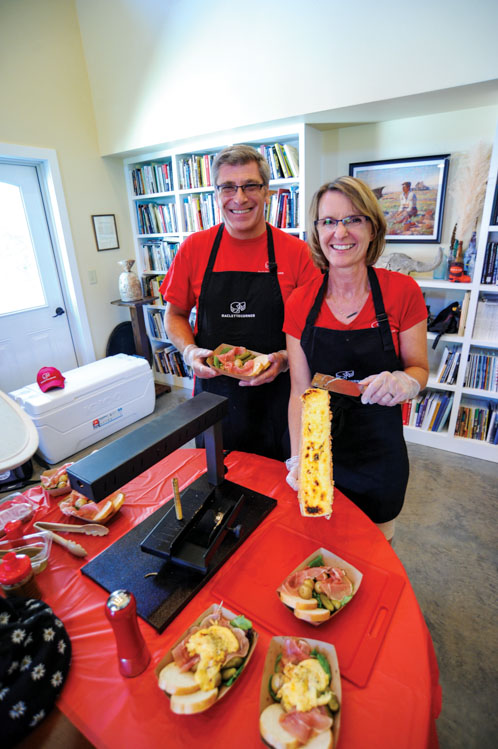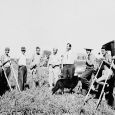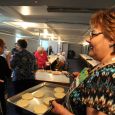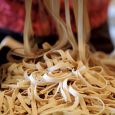The Gift of South Dakota
Subscriptions to South Dakota Magazine make great gifts!
Subscribe today — 1 year (6 issues) is just $29!
Raclette: A Toasty Alpine Delicacy
 |
| Marc and Sonja Hoffmann of Sioux Falls serve a traditional Swiss delicacy called raclette as part of Sonja's online business, Raclette Corner. |
Perhaps you’ve seen the Facebook videos in which half-wheels of creamy cheese are heated until the top layer is melted, bubbly and slightly browned, then scraped off onto a waiting dish of food. That gooey cascade of cheese is a Swiss treat called raclette, and a Sioux Falls woman named Sonja Hoffmann promotes its deliciousness as part of her online business, Raclette Corner.
The daughter of a Swiss mother, Hoffmann grew up in Germany, but her husband Marc’s career as a software consultant brought their family to Sioux Falls in 1998. She started selling European cookware online a few years later. “I decided that as much as I love my children, I needed something a little bit extra,” she says. Hoffmann was the first U.S. distributor for raclette grills, tabletop cheese melters that are common in Swiss, French and German households but were almost unheard of in America. Gradually, her cheesy product lines garnered more attention. In 2007, she started RacletteCorner.com, and by 2018, decided it was time to shutter the original cookware site. “I just decided to focus on raclette because it’s fun,” she says.
The word raclette comes from the French racler, “to scrape,” pointing to the cheese’s origins in the French-speaking Valais region of Switzerland, where the dish was created due to nomadic necessity. For thousands of years, Alpine herdsmen have driven livestock from their winter valley homes to high-altitude summer pastures in a seasonal migration called transhumance. When herds went into the mountains, the herdsmen carried hearty peasant provisions with good keeping qualities, like cheese and potatoes. Add in a fire, and sooner or later, somebody was going to put the three elements together, toasting the cheese over the flames and sliding it onto the boiled potatoes. Racletting references have been found in medieval manuscripts dating back to the 13th century.
Raclette is a semi-hard cows’ milk cheese that has been washed in brine, giving it an edible rind and a somewhat powerful aroma. “It doesn’t necessarily taste that good when you eat it raw,” Hoffmann says, but melting helps tame the cheese’s flavor. “It loses that extreme taste, and it’s just nice and creamy.” Traditionally, the cheese tops a plate of new potatoes, cornichons and salad, but the Hoffmanns enjoy racletting a diverse array of foods, including hamburgers, pork chops, red peppers, mushrooms, pears and shrimp. After all, what doesn’t taste better with a little melted cheese on top?
In addition to online sales, Hoffmann offers raclette melter rentals and caters small raclette parties in the Sioux Falls area. A few years ago, she brought the culinary experience to Sioux Falls Germanfest and a few other special events. And while it’s sometimes difficult to get Midwesterners to try something new, once they have that first taste, they tend to want more, as Hoffmann discovered while serving ham and raclette cheese sandwiches at the Sioux Empire Arts and Crafts Show. “We had one lady who came back, and she was yelling, ‘I have to have a second one of these. This is the best food I ever had!’” Hoffmann remembers.
Editor’s Note: This story is revised from the September/October 2019 issue of South Dakota Magazine. To order a copy or to subscribe, call (800) 456-5117.










Comments